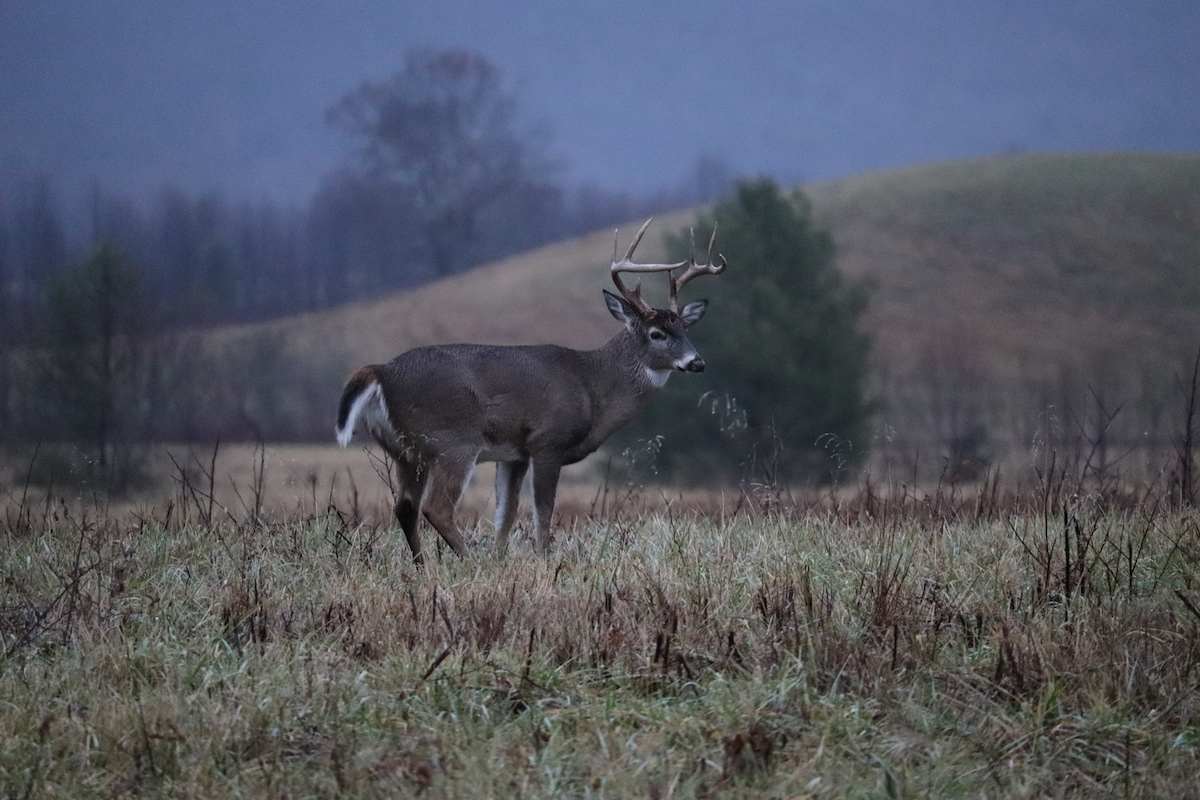Many hunters plan for their impending hunt by studying the upcoming weather forecast. This, of course, is for good reason, as deer movement is highly affected by a number of weather-related factors.
However, we do not always understand the exact correlation between certain forms of weather and the effects these particular conditions will have on the deer of a given area.
Rainfall, or a lack thereof, is often cited as a defining factor when attempting to predict deer movement. While some say that rain entices deer to move, others stipulate that deer often bed down during periods of precipitation.
These conflicting reports lead to a wealth of confusion, especially with the newer hunters among our ranks.
Contents (Jump to Topic)
ToggleSo where, exactly, does the truth lie? Read on to find out if deer move in the rain…
TL;DR
Light rain: Deer moves normally and may even be more active. Good hunting opportunity.
Heavy Rain: Some argue its validity, while others dismiss it. When heavy rain falls, deer often hunker down and restrict their activity, resulting in unfavorable hunting conditions. Differing viewpoints persist.
Wind: Deer avoid traveling in strong winds that impair their senses. Seek security cover.
After rain: Deer resume their movement quickly when the rain stops. Excellent time to hunt.
A Force Of Habit
Deer are creatures of habit and move about in response to several environmental factors. A rain shower or two does little to deter these movements, as deer are bound to a continual need for nourishment. Despite the rain, deer travel as needed to access food.
For this reason, one could surmise that “yes, deer do travel in the rain”. However, this would only tell part of the story.
read.. what does deer poop look like?
Hunters are perhaps better off asking themselves if there is a certain amount of rain that stifles deer movement and puts a damper on a hunt.
After all, not all precipitation is created equally, as there is quite a difference between a light shower and a heavy, prolonged downpour.
A Rainout?
In most cases, there is, in fact, a point at which deer tend to bed down rather than travel in the face of heavy precipitation. Deer move quite well in all but the heaviest downpours.
When rainfall becomes heavy enough to limit a deer’s senses, its movement generally tapers off quite rapidly.
Deer rely upon their senses to keep them safe from danger. These senses include magnified sight, acute hearing, and unbelievably strong smell.
However, intense rainfall shortens sight distance, limits the ability to hear clearly, and washes away foreign odors. This places the whitetail deer at a noticeable disadvantage.
What About Wind?
Deer are typically unbothered by a light rain shower, though this entire scenario changes drastically when a steady wind is put in play. Just as a heavy downpour of rain severely hampers a deer’s senses, winds greater than 15-20 MPH do the same.
Therefore, even a modest rain, accompanied by steady winds, is often enough to slow deer movement to a trickle.
This is a factor worth considering when planning for an upcoming hunt. If you still wish to go afield, you should focus on hunting within close proximity to heavier security cover. This often includes dense pine/cedar thickets.
read.. How high can whitetail deer jump
Additionally, deer can often be found traveling windbreaks, such as rock outcroppings and bluffs, during periods of adverse weather as well.
One must also carefully consider the direction of any wind accompanying a rain shower. Deer will generally spook at even the slightest whiff of human odor, even in the accompaniment of moderate rain.
Hunting In The Rain
Hunting during periods of light rain often proves fruitful, as deer move about much like they regularly would. Deer movement is often slightly heavier in light rain than it otherwise would be during fair weather.
This, in turn, provides an excellent opportunity for those who choose to remain on the stand.
However, the best way to use rainfall to your advantage when planning a hunt is to lie in wait for heavy rain showers to diminish.
While deer will typically bed up during heavy downpours, they tend to move feverishly in the 30 minutes following a rain event’s conclusion.
Many hunters use this fact to their advantage by hunkering down on-stand while wearing a rain jacket in anticipation of clearing weather.
read.. will deer move with frost on the ground
This tactic tends to be extremely deadly when hunting relatively close to a mature buck’s bedding area.
The cooling effect of an evening rain shower is often enough to force an otherwise reclusive buck to his feet 30 minutes or so before such movement would otherwise occur.






